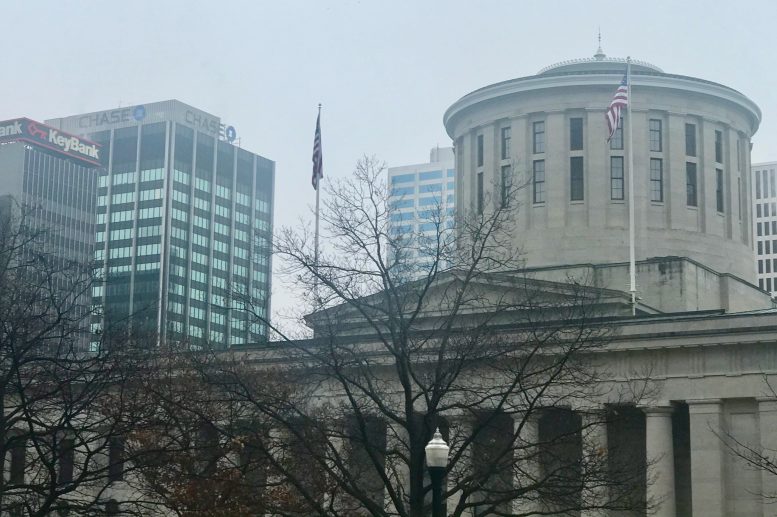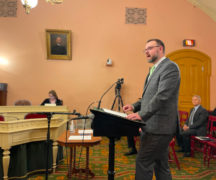By Rob Moore
Social distancing has its benefits. Most economists who have analyzed these policies seem to think the benefits gained in lives saved outweigh the costs they exact in economic damage using standard valuation techniques. Nonetheless, the costs are substantial.
Last week, the Congressional Budget Office released projections that the United State gross domestic product will fall by 7% during the second quarter of 2020 — an annualized rate of 28%. The same report projected second quarter unemployment to top 10%. However you cut it, we’re in for a massive nationwide economic slowdown.
Economic slowdowns can be exacerbated by slowing public sector activity. According to the Legislative Service Commission, about 70% of the state operating budget is state sales, income, and other taxes and receipts. A fall in economic activity means less revenue available to support building human capital through education and ensuring economic security through state health and human service programs.
State policymakers are already feeling the effects of this impending recession. Weeks ago, Ohio Gov. Mike DeWine ordered agency officials to cut their budgets by as much as 20% in anticipation of a revenue shortfall. If this level of state budget cuts happened across the government, it would represent the largest contraction of state government in recorded history, double the contraction the state suffered in the depths of the Great Recession.
Revenues are already showing a shortfall in March. General revenue tax receipts are 10.5% below projections, weighed down by sales tax revenues 8.3% below projections and income tax revenues 5.1% below projections. We can only expect this to get worse in April since social distancing measures were only implemented partway through the month of March.
On top of this, Ohio’s shift towards reliance on sales tax over income tax, which would bring stability during a cyclical recession, has only hurt its budget more in this bizarre recession triggered by mass mandated limitations on retail operations.
Ohio was not quite prepared for a severe recession, either. According to a report published by Moody’s Analytics in October 2019, the state has only saved enough money since the last recession to cover 8.1% of operating costs. In their severe recession simulation, which seems like the most comparable scenario at this point, this would still leave the state with a $2.4 billion budget gap, 7.2% of 2019 revenues, even after draining its savings.
Compare this to Indiana, which will only have to cut 3% of state revenues, and West Virginia, which had saved enough to not need cuts under the simulation, and you see why healthy savings are so important.
So policymakers will be faced with choices. Will they go with 20% budget cuts, the equivalent of cutting everything after the first semester of sophomore year in the education budget across every department? Will they tap into revenue sources that also grow the economy like fuel taxes, pollution fees, and targeted congestion fees? Or will the $4.5 billion in federal relief bail them out? Policymakers will have to make these decisions sooner than you might think.
***
Rob Moore is the principal for Scioto Analysis, a public policy analysis firm based in Columbus. Moore has worked as an analyst in the public and nonprofit sectors and has analyzed diverse issue areas such as economic development, environment, education, and public health. He holds a Master of Public Policy from the University of California Berkeley’s Goldman School of Public Policy and a Bachelor of Arts in Philosophy from Denison University.






